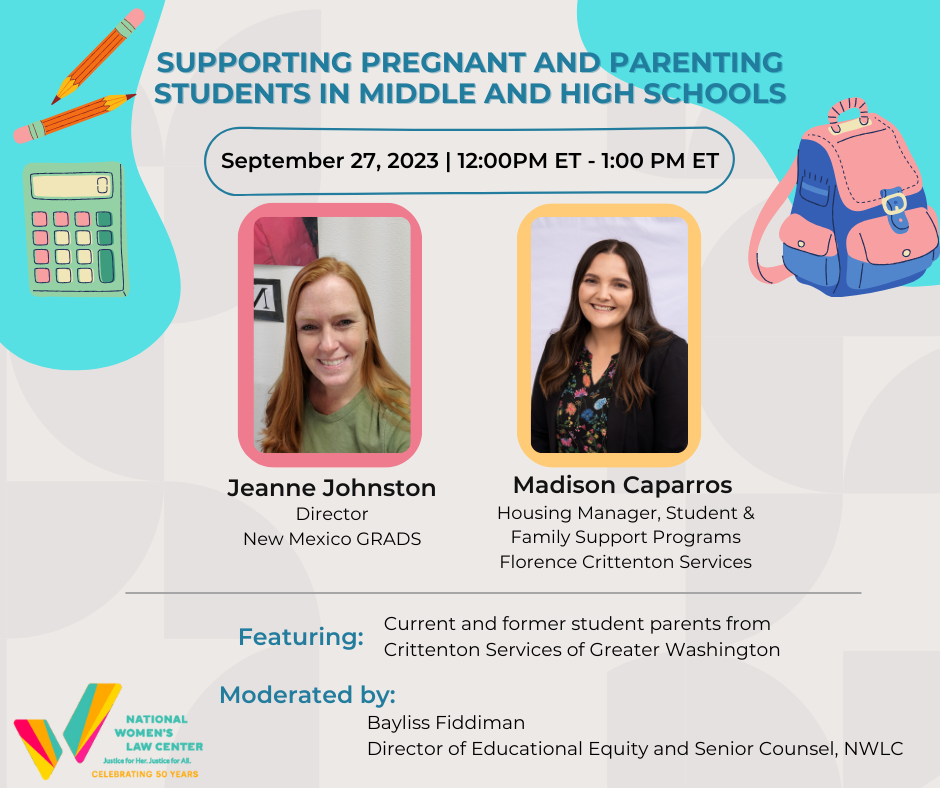
“Supporting Pregnant and Parenting Students in Middle and High Schools” is a series of small reports analyzing state legal protections for pregnant and parenting students across 50 states and the District of Columbia. Young parents deserve the opportunity to complete their education free from bias and harassment, and in environments that are supportive of their circumstances. Yet too often, young parents are overlooked, face stigma, and are required to navigate education systems that were not designed to address their unique needs. Moreover, as young people across the country lose rights and access to the full range of reproductive health care, fewer young people will be able to control their reproductive futures. While protections that ensure that every pregnant and parenting student has the necessary support to complete their education are long overdue – they are particularly urgent now given the deteriorating reproductive health care landscape.
According to the most recent data available, only 51% of teenage mothers complete their high school diploma by age 22.[1] All students deserve the opportunity to attain their high school diploma, which contributes to increased future earnings.[2] It is especially important for young parents who have children that they are responsible for. School policies that were created without consideration for the needs of pregnant and parenting students make it difficult to keep them in school. To increase graduation rates for young parents, it is important to change the policies that become barriers to education for them. This report series investigates a few essential accommodations that will support pregnant and parenting students in completing their education.
“Supporting Pregnant and Parenting Students in Middle Schools and High Schools” is a review of state laws and policies that guarantee protections and support for student parents in middle school and high school. This series is meant to provide a snapshot of current protections for pregnant and parenting students. It will not cover all the supports and protections that they need, however it’s a starting point to begin considering how we can better serve this student population.

